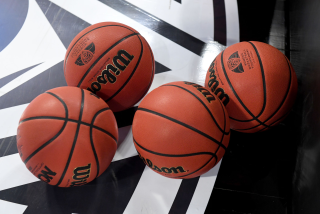What Counts When Students Ask for Recommendations
- Share via
As many teachers know, it’s the time of year when high school students begin dropping off college letter of recommendation forms, often by the ton.
Two years ago, I wrote 147 of these, which should qualify for the Guinness Book of World Records. Or in any case, it should qualify me to comment on the process a teacher goes through in writing a recommendation. It might be something for parents and students to think about before they need one.
First of all, there are two components to a recommendation, a “scoring” chart where the teacher is asked to rate students in different areas by checking boxes that use various terms like “average” “top 10%” or “one of the best in my career.”
The categories are almost always the same: initiative, oral communication, creativity, concern for others, written communication, maturity, reaction to setbacks, leadership ability, originality, self-discipline and even sense of humor. Then the university or college will ask the teacher to write paragraphs or an actual essay about a student’s academic strengths, social strengths and any other information deemed pertinent.
How important are these recommendations? According to college admissions officers, it’s hard to differentiate at schools like Stanford and Harvard among the thousands of applicants with near-perfect records and scores. A personal recommendation can help a college “see” the student beyond his numbers. It is also a way to corroborate some of the claims students may make in their applications. If a girl insists she was a vital element on the school’s speech and debate team, a letter from the team’s coach waxing eloquent about this kid helps. If a boy states that he has a deep love for science, his chemistry teacher’s words will indicate if this is actually the case.
Making a favorable impression goes beyond getting a good grade. Obviously, grades are a factor and often a good indication of effort and interest. But sometimes a straight “A” student can come off as almost robotic if there is no passion behind those percentages. Trying to write a recommendation for a student with impressive SAT scores but no people skills is almost impossible. I’ve had A students who I really didn’t ‘know” at all. I’m not at all sure what they got out of the class and no clue as to how they might one day use that information.
When I sit down to write one of these, the first thing I do is visualize the student sitting in my class. And what do I see? A bright, alert face, ready to learn something new? A boy who will give me and my lesson a fair shake? A girl who lets me know what we’re doing is worthwhile?
Or do I see someone doing homework from another class, talking to the person in the next seat, or barely staying awake?
It’s hard work up there in front of the class, and teachers need to know that we’re getting through to our clients. What are some ways students can let us know this?
While we’re reading a Shakespearean comedy, do you ever smile? When we show a scene from the film, “All Quiet on the Western Front,” do you seem moved? If a science experiment works, do you react? If we discuss the Holocaust, do you show outrage? Simply stated, do you care about this class?
Beyond facial expression and body language, there are other, more overt forms of behavior that indicate that students are actively involved in their education. Probably nothing indicates interest more than a student’s obvious eagerness to get involved in class discussion.
Teachers don’t expect brilliance at every turn, but are gratified by sincere efforts to be involved. This is not to say students have to be total extroverts to participate in a meaningful way, but an occasional willingness to speak out is good for everyone. No matter how you slice it, initiating a comment or a question comes across as interest.
Knowing a student is the sum of many small interactions. The knowing nod in class that says, “I get it.” A moment at your desk to add just “one more comment” before leaving. The quiet sharing of a personal experience. The clipped cartoon or article that suddenly seems relevant. And above all, not being afraid to let a teacher know that the poem, the slide show, the carefully prepared lab had an impact, made a difference or cleared up some confusion.
No one is suggesting phony apple polishing. Teachers can spot that coming through the door. But if a student truly cares about a class, there are many ways to let the teacher know that. It’s a pleasure to write a recommendation for a deserving student, one who makes us remember why we became teachers. Just as a good student inspires good teaching and outstanding recommendations, a student simply out for the grade inspires neither. Luckily for me, most of the students asking me for recommendations have figured this out.
*
Christine Baron is a high school English teacher in Orange County. You can reach her at educ@latimes.com or (714) 966-4550.
More to Read
Sign up for Essential California
The most important California stories and recommendations in your inbox every morning.
You may occasionally receive promotional content from the Los Angeles Times.










